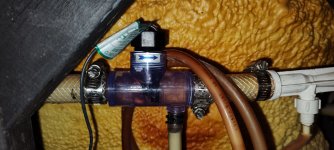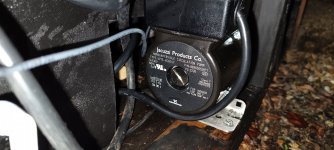Methuselah
Well-known member
I got some vinyl tubing and couldn't get the circ pump to move water, even after I primed it.
I found where the hot lead plugged into the board and clamped it while it was running - .49 Amps.
Either I got the run capacitor leads reversed when I connected it back to the motor - or something inside the pump is shot.
Cap is not polarized and can be connected either way. Some motors have a start winding and centrifugal switch that disconnects when it spins up, could be bad contacts on it if present, capacitor could be low in value and causing the issue too.
I agree with JamesW on how to check it and his assessment of your amps reading, but I'm going to repeat myself ... if you replace that pump you are probably either needing, or will need it sooner rather than later, and taking it to a motor repair shop would also have resulted in a known good motor (and likely fix).
I'm like you, would rather spend time than money, so I understand your process. If you are mechanically inclined, you may be able to repair the motor yourself too ... just lightly sand the commutator, replace brushes if needed, and if the bearings are bad and won't come out easily perhaps said motor shop will remove them for free if they are sympathetic. For them it's probably a 30 second process.
Knowing nothing about your tub until you posted the pictures, I can see that circulation pump is directly in line with the heater element and flow switch, so am thinking the main pump and aux have little to contribute to actuate that flow switch. Seems like that pretty much guarantees the problem is the circulation pump now that you have a new flow switch. Also, obviously that flow switch is installed in the correct position.
I hope you get it up and running soon, looks like you are in the home stretch



